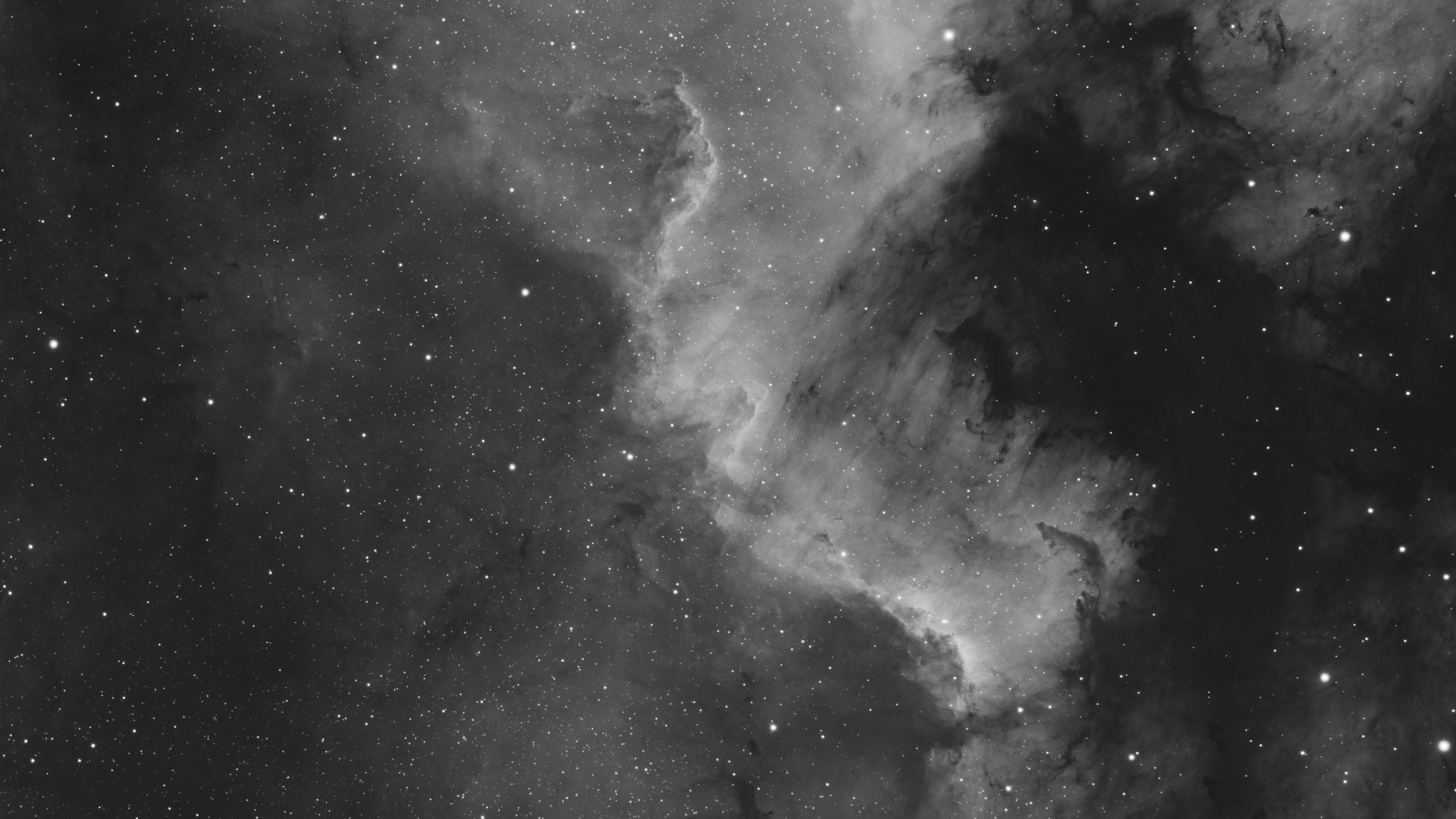The Cygnus Wall of Star Formation
 |
| The Cygnus Wall in Hydrogen-Alpha: Taken under Michigan Skies, July 2022. |
In the 2nd century CE, Claudius Ptolemaeus (Ptolemy) wrote the Almagest; a mathematical and astronomical treatise on the apparent motions of the stars and the planets. This influential text was leveraged for the next 1,200 years to support the geocentric solar system (earth-centered) until the the early Renaissance when the helio-centric (sun-centereed) model was developed by Nicolaus Copernicus. In the Almagest, Ptolemy had divided the night sky into 48 constellations; Cygnus being one of them.
The constellation Cygnus, being Greek for Swan, earned its name because the brighter stars in this area of sky seem to resemble that of a bird in flight. What people in Ptolemy's time could not know, was the massive amount of nebulous activity that exists within this region of sky. From the massive regions of hydrogen that spread far around the star Sadr, to the North America Nebula spread around Deneb and to the leftover remnents of a Supernova explosion known as the Veil Nebula, large swaths of ionized gasses form wonderous structures that can teach us plenty about activity within the Cosmos.
The Cygnus wall is a 'W' shaped front of stellar formation located in the North America Nebula. This stellar front spans about 20 lightyears across and emitts most of its light in Hydrogen-alpha (Hα), or more precisely at 656.281 nanometers. This light is visibly red. In this image however, I have used a filter that allows only a narrow band of light through around the 656.281nm wavelength, so there will be no human way to interpret color as we normally do. Instead, a grayscale image is used to represent how Hα varies throughout the region.
I bet you'll easily spot the Cygnus Wall in this photo taken of the North America Nebula. This was actually my first image post here.
You can combine this data with other narrow-band wavelengths such as Oxygen (O3) and sulfur (S2) as well as a few others to generate a false color image that is more suited for scientific analysis of how certain gasses constitute different structures within a given region. This image formed using nine-hours of total exposure taken over multiple nights. If I have more time, maybe I'll record some other wavelengths to add but for now I think its worthwhile just to marvel at the sheer complexity of Hydrogen.
Full image of the Cygnus Wall available here.
Stay tuned for more narrow-band imaging sessions!
Comments
Post a Comment